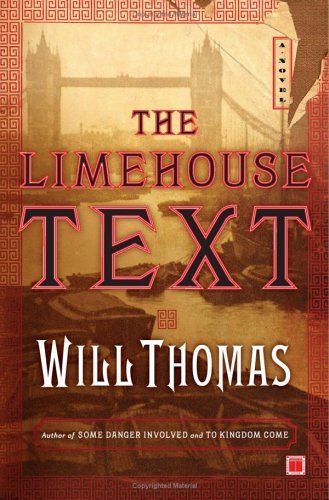 The Limehouse Text (Barker & Llewelyn, #3) by Will Thomas
The Limehouse Text (Barker & Llewelyn, #3) by Will Thomas Format: ebook
Source: purchased from Amazon
Formats available: hardcover, paperback, ebook, audiobook
Genres: historical fiction, historical mystery, mystery
Series: Barker & Llewelyn #3
Pages: 352
Published by Touchstone on July 4, 2006
Purchasing Info: Author's Website, Publisher's Website, Amazon, Barnes & Noble, Kobo, Bookshop.org, Better World Books
Goodreads
In The Limehouse Text, Barker and Llewelyn discover a pawn ticket among the effects of Barker's late assistant, leading them to London's Chinese district, Limehouse. There they retrieve an innocent-looking book that proves to be a rare and secret text stolen from a Nanking monastery, containing lethal martial arts techniques forbidden to the West. With the political situation between the British Empire and Imperial China already unstable, the duo must not only track down a killer intent upon gaining the secret knowledge but also safeguard the text from a snarl of suspects with conflicting interests.
Prowling through an underworld of opium dens, back-room blood sports, and sailors' penny hangs while avoiding the wrath of the district's powerful warlord, Mr. K'ing, Barker and Llewelyn take readers on a perilous tour through the mean streets of turn-of-the-century London.
My Review:
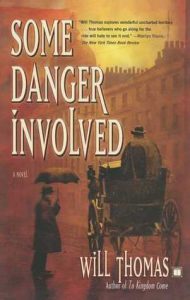 I was feeling in a bit of a murder-y mood this week – reading-wise at least. Which seems entirely fitting as we’re ‘killing’ 2023 this weekend and ringing in 2024. Even the first book this week, Paladin’s Faith, fits that murder theme, because the story is wrapped around preventing the protagonist from getting murdered, AND because one of the characters in the story is from a people who call the individual years gods, gods who die at the end of the year as the new year-god is born.
I was feeling in a bit of a murder-y mood this week – reading-wise at least. Which seems entirely fitting as we’re ‘killing’ 2023 this weekend and ringing in 2024. Even the first book this week, Paladin’s Faith, fits that murder theme, because the story is wrapped around preventing the protagonist from getting murdered, AND because one of the characters in the story is from a people who call the individual years gods, gods who die at the end of the year as the new year-god is born.
And this series, Barker & Llewelyn is also part of my anticipation for the coming year, as this series has turned into my new comfort read series, just as yesterday’s book was the penultimate story in a series that has formed part of my comfort reading for THIS year coming to an end.
Barker & Llewelyn certainly have become a comfort read, as was evidenced by the way I slipped back into their Victorian London like slipping into a warm bath, and didn’t resurface until my mind had its fill of the mystery and was ready to come back to the real world.
Not that the real, 21st century doesn’t intrude in this series, because it frequently does. Not through ANY anachronisms, but rather as a result of the fact that technology may change but human nature does not. The issues that face Barker & Llewelyn, issues of race, gender, class and socioeconomic inequalities, the tensions between countries and war and peace, have always been part of the human condition.
The author does an excellent job of allowing the reader to experience the roots of specific 21st century issues in 19th century mores, behaviors and actions without ever breaking the character of the era in which this series takes place.
This entry in the series, as looks to be a developing pattern for the stories as a whole, begins at a climactic moment very near the end that seems both shocking and inexplicable as an opening – but fully rivets the reader’s attention and doesn’t let go until the story has caught up to that climax.
Rather like a caper story, which often begins by seeing the results of what got done and then winds its action back to the beginning of how the characters got to that point. After all, there kind of is a caper in The Limehouse Text. Multiple capers, in fact, although that’s not clear to anyone involved when Llewelyn winds his narrative back to begin at the beginning.
Which turns out to be tied up in Thomas Llewelyn’s own beginning as Private Enquiry Agent Cyrus Barker’s assistant. The job Llewelyn has been growing into and abler for every day was only available to him because the previous occupant had become involved in considerably more danger than even his employer had been aware of. Danger that resulted in his murder – a case that Barker has not managed to solve even a year later.
But new evidence in Quong’s murder has been uncovered by a police inspector who turns out to have been a bit too thorough for his own good. Resulting in the reopening of that old case, a new string of deaths and the potential for grave diplomatic incidents in the already fractious relationship between Britain and China – whether those incidents take place in Limehouse, in Peking, or over Cyrus Barker’s grave.
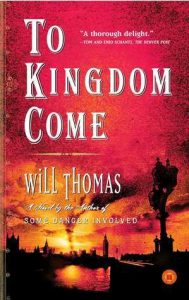 Escape Rating A+: One thing drove me utterly bananas during my reading of The Limehouse Text. I had the vague impression, not that I’d read this before, but that the Jeremy Brett Sherlock Holmes series had also tackled a story set in Limehouse – London’s Victorian version of Chinatown – but couldn’t track down precisely which story. I think it may have been “The Man with the Twisted Lip”, but I wasn’t able to nail it down without watching the thing. (Which would have been a treat but not necessarily at 3 in the morning.)
Escape Rating A+: One thing drove me utterly bananas during my reading of The Limehouse Text. I had the vague impression, not that I’d read this before, but that the Jeremy Brett Sherlock Holmes series had also tackled a story set in Limehouse – London’s Victorian version of Chinatown – but couldn’t track down precisely which story. I think it may have been “The Man with the Twisted Lip”, but I wasn’t able to nail it down without watching the thing. (Which would have been a treat but not necessarily at 3 in the morning.)
And that was absolutely the only quibble I had with the whole fascinating story, which made The Limehouse Text an excellent book to close out the year!
I got into the Barker & Llewelyn series because of their resemblance to Holmes and Watson, but I’ve stayed, and plan on continuing, because of the ways in which they take that familiar setting and put an entirely different spin on it in the very best way.
A big part of that spin is that Holmes and Watson were, in their own ways, both insiders in a society that rigorously imposed boundaries on all sides. Barker, as a self-educated Scotsman who grew up in China, and Llewelyn, as a Welshman who served a prison sentence, are outsiders and frequently and bitingly reminded of it by the powers-that-think-they-be.
This condition is played with, up, out and over in this entry in the series, as it showcases the contempt with which the British government and its representatives, as well as more of the general public than we’d like to admit, treated both the Chinese immigrants who had settled in London AND the whole entire government of Imperial China which the British continued to rape and pillage on any and all pretexts.
(R.F. Kuang’s Babel also draws on these same historical conditions – but takes them in a rather different direction.)
While all of that is background, it is also an integral part of the mystery, as the item that Quong died for is a sacred text that should never have been smuggled out of China. It does not have the military applications that either the Chinese or the British believe that it might, and it absolutely does belong back where it was stolen from. The conflict within the story is between those who want to profit from it, those who want to use it for its purported military applications, and those who want to see it returned to its rightful place.
With Barker caught in the middle and punched from all sides. Literally.
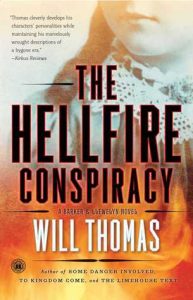 In the end, this is a clever, convoluted mystery, solved but not truly resolved by fascinating characters, steeped in a culture and a perspective that was not treated with any kind of respect in its time and about which stereotypes promoted during this period still linger. The reader is inexorably drawn in by the mystery and the setting, and left with both the satisfaction of at least some just desserts being served – as a mystery should – while still reeling from the marvelously presented microcosm of all the reasons why ‘colonialism’ is such a disgustingly dirty word in so many places around the globe to this very day.
In the end, this is a clever, convoluted mystery, solved but not truly resolved by fascinating characters, steeped in a culture and a perspective that was not treated with any kind of respect in its time and about which stereotypes promoted during this period still linger. The reader is inexorably drawn in by the mystery and the setting, and left with both the satisfaction of at least some just desserts being served – as a mystery should – while still reeling from the marvelously presented microcosm of all the reasons why ‘colonialism’ is such a disgustingly dirty word in so many places around the globe to this very day.
For all these reasons, and the reasons outlined in my reviews of the first two books in this marvelous series, Some Danger Involved and To Kingdom Come, I will absolutely be back for more of Barker & Llewelyn’s fascinating cases in 2024. Next up, The Hellfire Conspiracy, the next time I need a comfortingly murderous read!

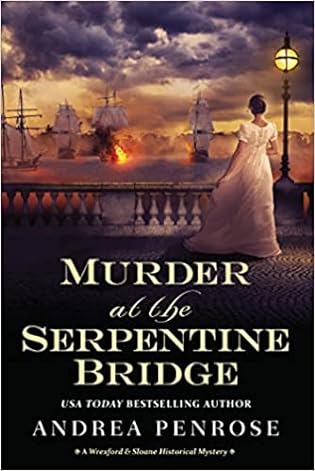 Murder at the Serpentine Bridge (Wrexford & Sloane, #6) by
Murder at the Serpentine Bridge (Wrexford & Sloane, #6) by  As the previous book in this series,
As the previous book in this series, 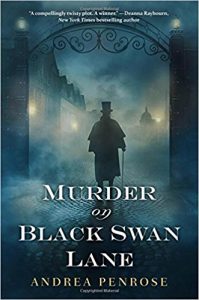 Escape Rating A: This was the right book at the right time, and I clearly waited enough time after
Escape Rating A: This was the right book at the right time, and I clearly waited enough time after  Meanwhile, everyone is chasing everyone else’s tails into danger, as the government’s intelligence services are unwilling to let the right hand know what the left hand is doing (shades of yesterday’s book) and everyone is unwittingly keeping vital clues from even their nearest and dearest.
Meanwhile, everyone is chasing everyone else’s tails into danger, as the government’s intelligence services are unwilling to let the right hand know what the left hand is doing (shades of yesterday’s book) and everyone is unwittingly keeping vital clues from even their nearest and dearest.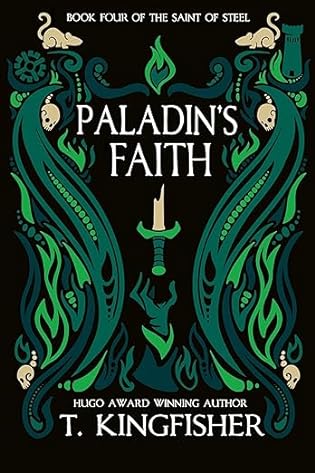 Paladin's Faith (The Saint of Steel, #4) by
Paladin's Faith (The Saint of Steel, #4) by 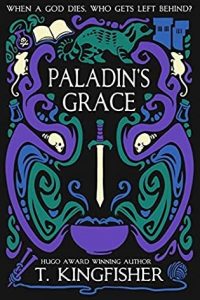 There’s a classic saying about large organizations at cross-purposes within themselves, that the right-hand doesn’t know what the left hand is doing. Marguerite Florian’s problem with the Red Sail mercantile empire is that their “right hand does not know who the left is killing”.
There’s a classic saying about large organizations at cross-purposes within themselves, that the right-hand doesn’t know what the left hand is doing. Marguerite Florian’s problem with the Red Sail mercantile empire is that their “right hand does not know who the left is killing”.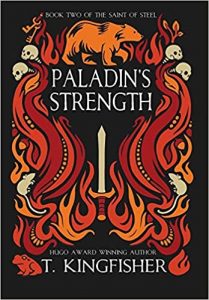 Marguerite just has to stay alive long enough to find the artificer. For that, she’ll need bodyguards who can’t be bribed or bought, seduced or suborned. She needs a paladin – or two.
Marguerite just has to stay alive long enough to find the artificer. For that, she’ll need bodyguards who can’t be bribed or bought, seduced or suborned. She needs a paladin – or two.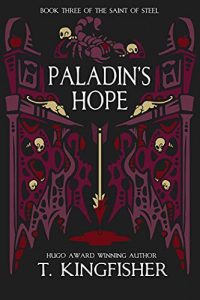 Howsomever, by the nature of that waiting game a LOT of this story is extremely interesting character development with a fair bit of adding to the depth of the worldbuilding but one does, like one of the side characters, Davith, want them to just ‘get on with it’ one way or another, either to get a move on in their mission or just make a move on each other.
Howsomever, by the nature of that waiting game a LOT of this story is extremely interesting character development with a fair bit of adding to the depth of the worldbuilding but one does, like one of the side characters, Davith, want them to just ‘get on with it’ one way or another, either to get a move on in their mission or just make a move on each other.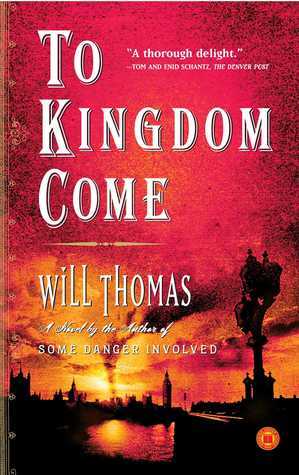 To Kingdom Come (Barker & Llewelyn, #2) by
To Kingdom Come (Barker & Llewelyn, #2) by 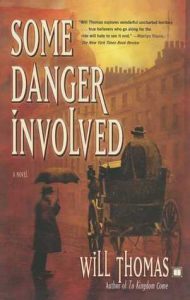 After the events of the first marvelous book in this series,
After the events of the first marvelous book in this series, 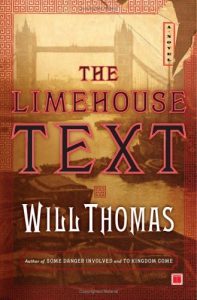 What kept me glued to my seat (as this turned out to be a one-sitting/one-evening read) was the way that it dove head-first both into the heart of its point-of-view character Thomas Llewelyn and into the hearts and motivations of the Irish Republican Brotherhood faction members, and the difficulty that Llewelyn had separating himself from them and his sympathy for their cause even as he decried their methods and worked to bring them down, doing his best to keep them all from being blown “to kingdom come”.
What kept me glued to my seat (as this turned out to be a one-sitting/one-evening read) was the way that it dove head-first both into the heart of its point-of-view character Thomas Llewelyn and into the hearts and motivations of the Irish Republican Brotherhood faction members, and the difficulty that Llewelyn had separating himself from them and his sympathy for their cause even as he decried their methods and worked to bring them down, doing his best to keep them all from being blown “to kingdom come”.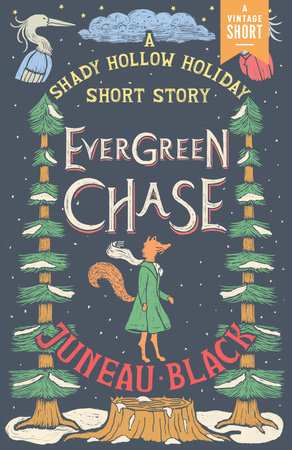 Evergreen Chase: A Shady Hollow Mystery Short Story by
Evergreen Chase: A Shady Hollow Mystery Short Story by 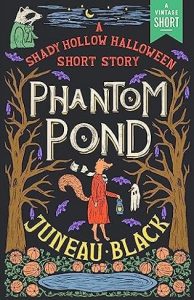 This is explicitly not a Christmas story, just as
This is explicitly not a Christmas story, just as  That the town pulls together to celebrate the solstice with or without the tree is all part of the series’ charm. That they have their own solstice miracle just adds to the sweetness of both the story and the holiday season – both theirs and ours.
That the town pulls together to celebrate the solstice with or without the tree is all part of the series’ charm. That they have their own solstice miracle just adds to the sweetness of both the story and the holiday season – both theirs and ours.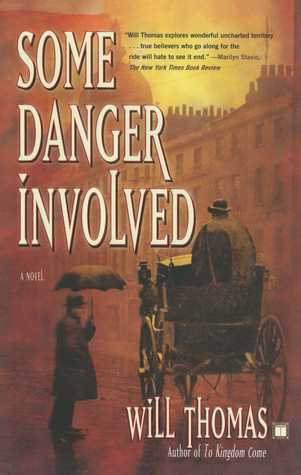 Some Danger Involved (Barker & Llewelyn, #1) by
Some Danger Involved (Barker & Llewelyn, #1) by  Murder at the Royal Botanic Gardens (Wrexford & Sloane, #5) by
Murder at the Royal Botanic Gardens (Wrexford & Sloane, #5) by 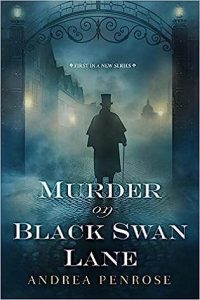 This fifth book in the
This fifth book in the  Before Charlotte can be truly happy, all of those swords hanging over her head have to be carefully taken down, while she and Wrexford are in the midst of solving a criminal conspiracy that turns out to have more heads than Hydra. That the sheer tangle of threats coming their way makes both of them realize just how many hostages to fortune they have gathered around themselves over the course of their investigations adds to Charlotte’s worry and angst.
Before Charlotte can be truly happy, all of those swords hanging over her head have to be carefully taken down, while she and Wrexford are in the midst of solving a criminal conspiracy that turns out to have more heads than Hydra. That the sheer tangle of threats coming their way makes both of them realize just how many hostages to fortune they have gathered around themselves over the course of their investigations adds to Charlotte’s worry and angst.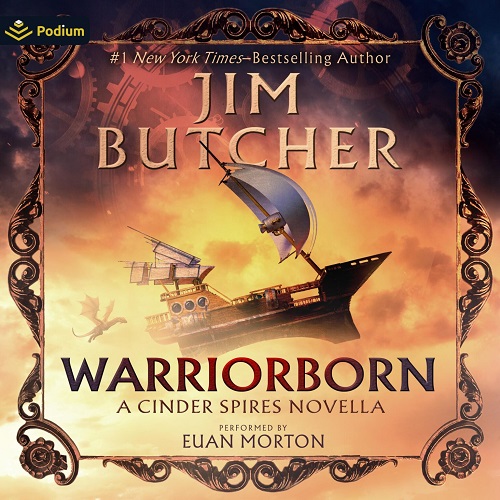 Warriorborn: A Cinder Spires Novella (The Cinder Spires) by
Warriorborn: A Cinder Spires Novella (The Cinder Spires) by  Warriorborn is the perfect method for readers who remember the first book in the
Warriorborn is the perfect method for readers who remember the first book in the 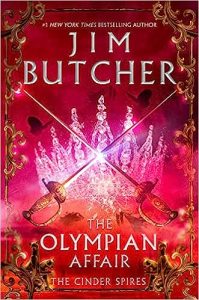 Escape Rating A-: I picked this up this week because I was having a “flail and bail” kind of day. Post Halloween, I was horror’ed out. Even at the horror-adjacency level I’m more comfortable in. I hit the “I can’t evens” and went looking for something a bit more comforting. This would not, I admit, normally have filled that bill, but the NetGalley app was having a flail of its own which is now fixed, but at the time was knocking me out of the book I’m listening to.
Escape Rating A-: I picked this up this week because I was having a “flail and bail” kind of day. Post Halloween, I was horror’ed out. Even at the horror-adjacency level I’m more comfortable in. I hit the “I can’t evens” and went looking for something a bit more comforting. This would not, I admit, normally have filled that bill, but the NetGalley app was having a flail of its own which is now fixed, but at the time was knocking me out of the book I’m listening to.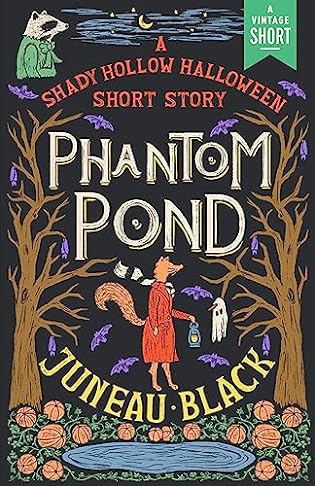 Phantom Pond: A Shady Hollow Halloween Short Story by
Phantom Pond: A Shady Hollow Halloween Short Story by 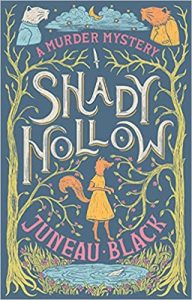 Every society seems to invent a holiday where its denizens can let their hair down, or at least loose the stays on the stricter rules of society, for a day or two – even if they don’t turn those rules completely topsy-turvy.
Every society seems to invent a holiday where its denizens can let their hair down, or at least loose the stays on the stricter rules of society, for a day or two – even if they don’t turn those rules completely topsy-turvy.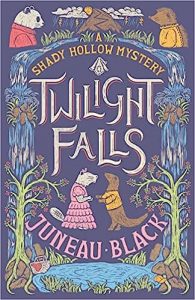 When one of the little Mischief Night revelers doesn’t turn up the following morning, not at home, not at her best friend’s house, not anywhere – and a vaguely threatening missive from Creeping Juniper is found in her place – everyone fears the worst.
When one of the little Mischief Night revelers doesn’t turn up the following morning, not at home, not at her best friend’s house, not anywhere – and a vaguely threatening missive from Creeping Juniper is found in her place – everyone fears the worst.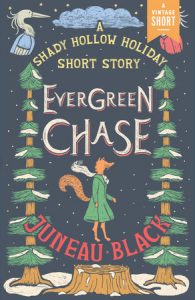 Then it turns the whole scenario on its head, one more time, into the best kind of cathartic happy ending about mysterious misunderstandings until all their, and our, fears are laid peacefully to rest but no character is left under a ‘Rest in Peace’ marker.
Then it turns the whole scenario on its head, one more time, into the best kind of cathartic happy ending about mysterious misunderstandings until all their, and our, fears are laid peacefully to rest but no character is left under a ‘Rest in Peace’ marker.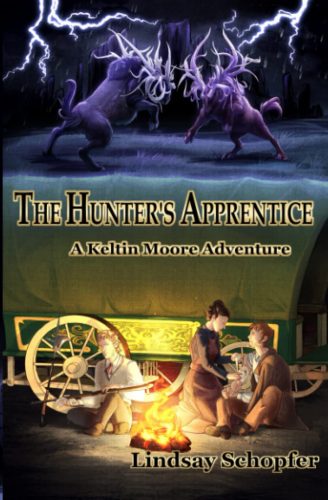 The Hunter's Apprentice: A Keltin Moore Adventure (The Adventures of Keltin Moore #4) by
The Hunter's Apprentice: A Keltin Moore Adventure (The Adventures of Keltin Moore #4) by 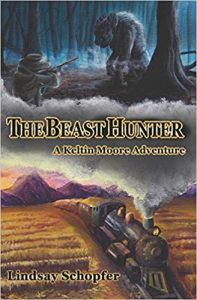 Keltin Moore’s fourth adventure represents a turning point for the famous Beast Hunter AND his family of choice in this fantasy-tinged, steampunk-powered series. When his story began in
Keltin Moore’s fourth adventure represents a turning point for the famous Beast Hunter AND his family of choice in this fantasy-tinged, steampunk-powered series. When his story began in 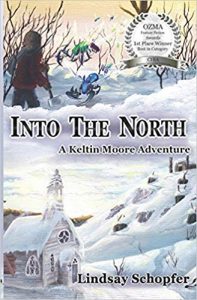 Escape Rating A: I read the second book in this series,
Escape Rating A: I read the second book in this series, 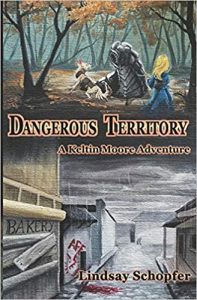 It’s an outsider’s inside view and the reader learns as much as Keltin does.
It’s an outsider’s inside view and the reader learns as much as Keltin does.